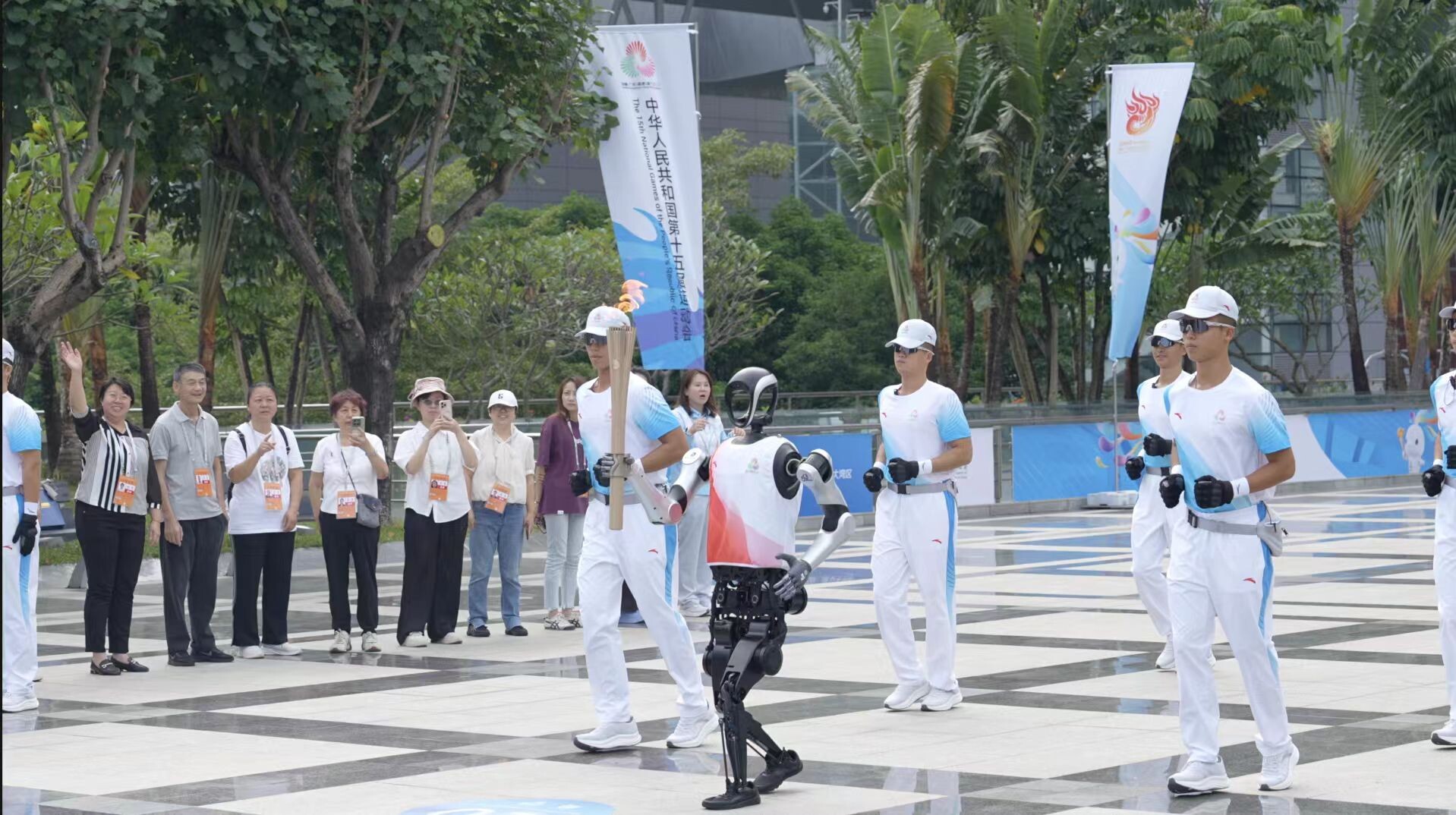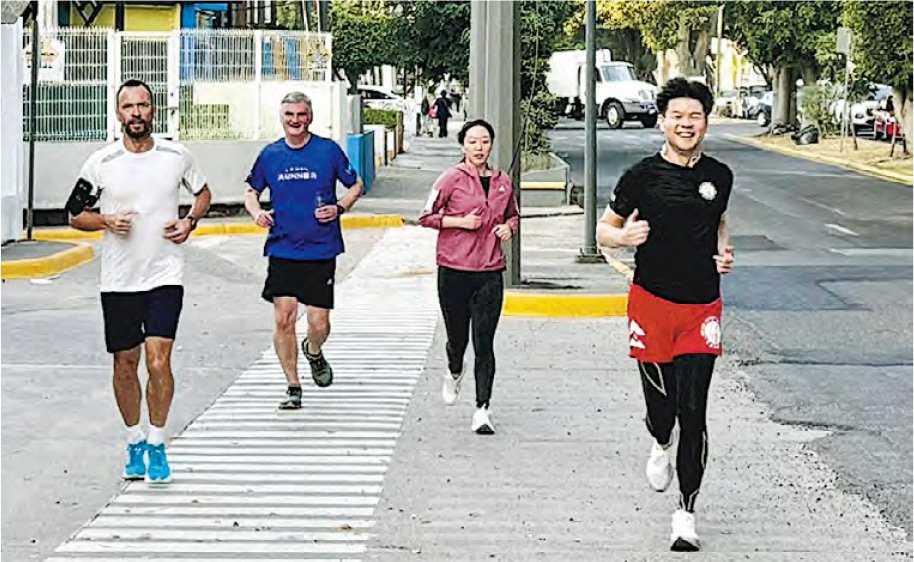 Kuavo, the world’s first humanoid robot torchbearer equipped with 5G-Advanced technology made its debut at the torch relay for the 15th National Games of China in South China’s Shenzhen on November 2, 2025. Photo: Courtesy of Leju Robotics
Kuavo, the world’s first humanoid robot torchbearer equipped with 5G-Advanced technology made its debut at the torch relay for the 15th National Games of China in South China’s Shenzhen on November 2, 2025. Photo: Courtesy of Leju Robotics
A humanoid robot named Kuavo (Kuafu in Chinese), developed by Shenzhen-based Leju Robotics, made its debut at the torch relay for the 15th National Games of China on Sunday in South China’s Shenzhen.
The black-and-white humanoid Kuavo has been designated the ceremonial “Zero Torchbearer”. On the opening day of the 15th National Games relay, Global Times reporters watched Kuavo raising its hands, sprinting in a lifelike, steady and natural manner.
Billed as the world’s first humanoid robot torchbearer equipped with 5G-Advanced (5G-A) technology, Kuavo gripped a 1.6-kilogram torch and completed the handover between the second and third legs of the relay, running a roughly 100-meter stretch in a human-like running posture that drew widespread attention, according to information the company sent to the Global Times on Sunday.
The robot was independently developed by Leju Robotics, with technical support from ecosystem partners including China Mobile, Harbin Institute of Technology, and the Beijing Institute for General Artificial Intelligence. The motion-control algorithm for running has been optimized to significantly enhance the robot’s disturbance resistance and adaptability to complex terrain, said the company.
According to the company, the robot’s appearance was made possible by breakthroughs in three technical areas: dynamic motion control, load-bearing stability, and remote real-time control via 5G-A. Leveraging 5G-A’s low latency and high bandwidth, the development team enabled seamless interaction between real-time video feedback from the relay site and the remote-control stream. Operators in the control room were able to control Kuavo in real time — directing its start, running, waving, and torch-transfer motions as it moved through the crowd, according to the company.
The Sunday’s relay was held simultaneously across the Hong Kong Special Administrative Region, the Macao Special Administrative Region, Guangzhou and Shenzhen in South China’s Guangdong Province — the first time the Games have adopted a “three-region linkage, four-city simultaneous transmission” organizational format, the CCTV News reported on Sunday.
Analysts said the demonstration marked a milestone for Shenzhen’s embodied-intelligence industry, showing how robotics technologies are moving from laboratory experiments into complex scenarios. The integration of advanced communication and motion-control systems allowed the robot to perform stable, dynamic movements while carrying the torch, illustrating practical applications of 5G-A-enabled robotics in public events.








